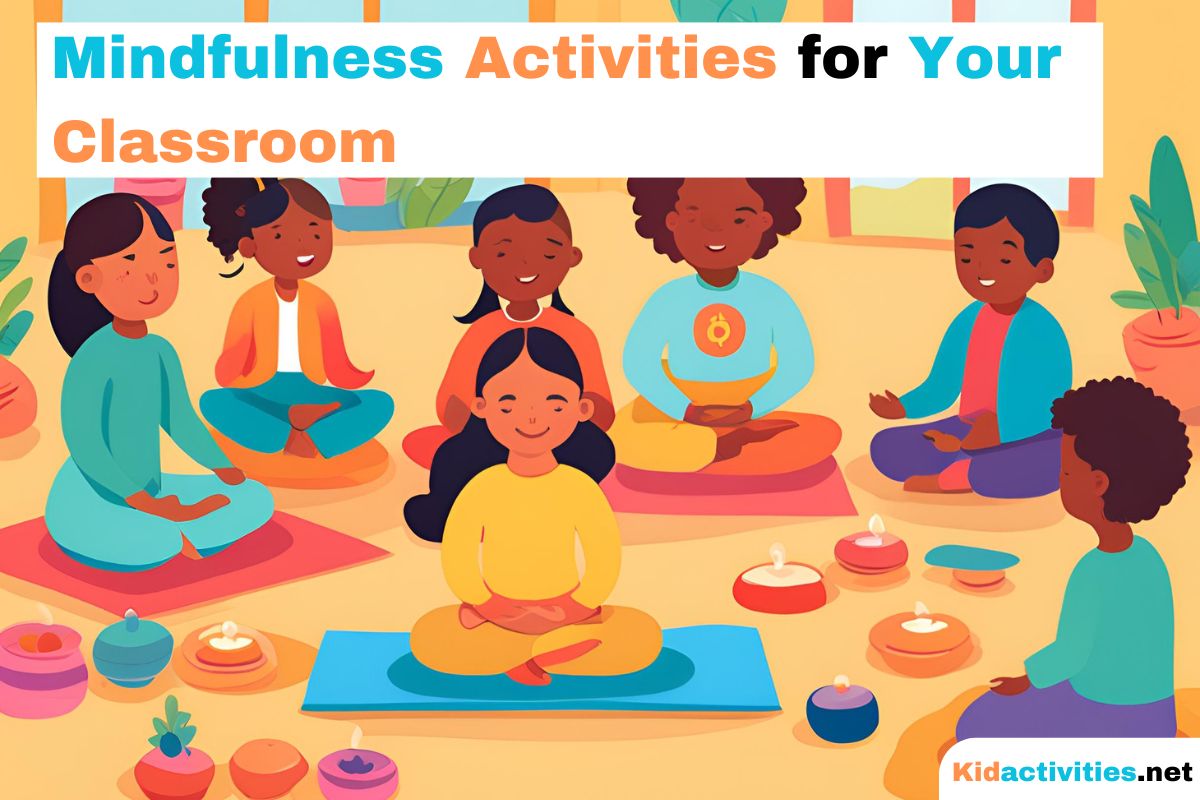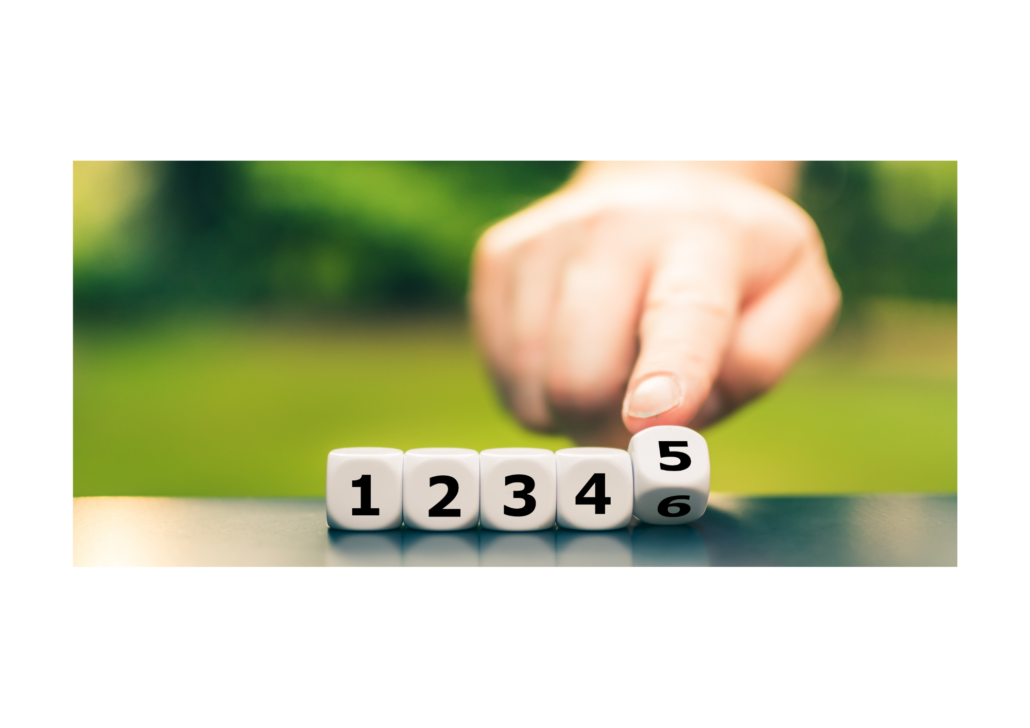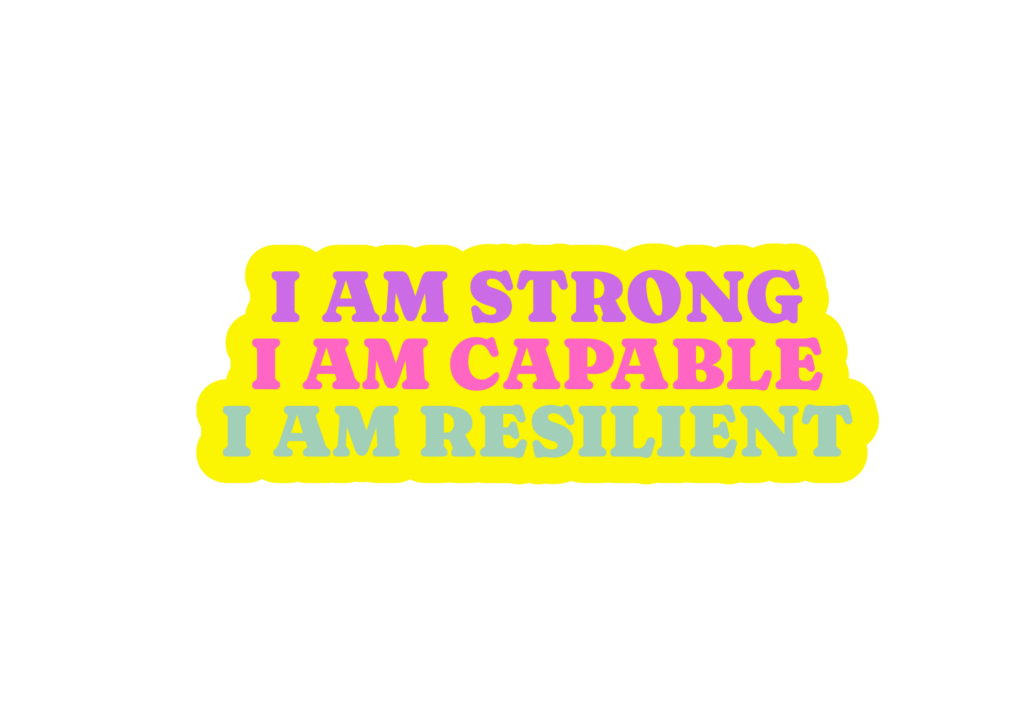Modern-day society is typically rushed, overscheduled, and hectic. The hustle and bustle of students’ and teachers’ outside lives can seep into even the most calm and well-managed classroom. Students might rush through work instead of taking their time to learn, or teachers may feel pressure to cover a large amount of curriculum material in a short amount of time. Such an on-the-go schedule can cause stress to everybody in the classroom.
Fortunately, there are many mindful options to help students and teachers alike recenter themselves to the present and reinstate a sense of calmness and well-being. Mindfulness is the state of being aware of something, such as the present moment, one’s surroundings, or how one feels emotionally or physically. Mindfulness is a healthy way to ground a classroom in its current reality and help a community enjoy the present moment. See below for five mindfulness activities to add to your classroom routine.
5-4-3-2-1
At times, your students may have a lot of energy. They may exhibit energy through physical restlessness like foot tapping, pen clicking, or fidgeting. Their energy could manifest as verbal outbursts, interrupting the lesson, or the thoughts of those working. Other times, you may notice some anxiety among one or several students for many reasons.
When the energy level of your class is high, take a quick break and lead the class in a grounding activity. Allow your students the choice to stand and stretch or sit and relax. Next, guide the students through the 5-4-3-2-1 activity, pausing to allow time for thinking between each prompt.
The 5-4-3-2-1 prompts participants to identify:
5 things you can see
4 things you can touch
3 things you can hear
2 things you can smell
1 thing you can taste
Students will name these items silently in their heads. Consider reminding students that it’s okay if they cannot identify certain senses. Next, have students take a final deep breath and continue your lesson for the day.
Guided Meditation
If you intend to establish a mindfulness ritual for your classroom, guided meditations are a great option. Guided meditation is where you and your students engage in a meditation process through a pre-recorded, generally offered in the form of a video. There are countless guided meditation videos on the Internet where you can customize to the length of time or the type of natural landscape (oceans, mountains) that often accompanies the meditation as a visual.
Guided meditations can lead participants through body scans, where you become attuned to how you feel inwardly and outwardly, breathing techniques, which can increase a sense of calm, and beautiful natural scenery, which studies claim to reduce anxiety. The variety of guided meditations available and accessible guarantee that this is a ritual that can be repeated in a classroom setting without being repetitive and inducing boredom.
Opening or closing a class with a guided meditation is a fantastic way to adopt a mindfulness ritual. “Meditation Monday” would be a beneficial way to start the week with your classroom community – on a calm and centered note.
Daily Intentions & Affirmations
Another mindfulness ritual you can add to the classroom is setting daily intentions and reciting daily affirmations. These practices only take a small amount of time and will reduce instructional time. However, they can positively impact a student’s approach to the class and one another.
Daily intentions involve how a student plans to be or feel for any given day or class period. Students may decide how they want to feel in class or within a day. “I intend to be calm,” could be their selected intention. “I will feel happy,” is another example.
Students may also select an action they want to embody on any given day. “I want to be focused,” can be one intention. “I will remain curious about learning,” might be another option.
At the beginning of a class, you may give your students thirty seconds of silence to decide on their daily intentions. Daily intentions are personal and can be unique to each student. You can decide whether students recite their daily intentions to themselves or if they turn and share their intentions with a classmate.
Daily affirmations can be a class-wide practice that brings the community together after establishing individual intentions. A daily affirmation is a positive statement that inspires and empowers students with confidence.
Some examples of daily affirmations can include:
“I can reach my goals.”
“I can have a positive attitude.”
“I can always improve.”
“I can exercise my mind.”
“I can learn from others.”
Students can take turns writing the day’s affirmation for their classmates, or you can create your own based on the needs of your class.
Mandala Coloring
Coloring is a relaxing and fun activity for all ages! When your students need a brain break, consider offering them mandalas and colored pencils or narrow markers. Set a five to ten-minute timer for their mandala coloring break. Consider adding calm music or a guided meditation in the background as they color. The complexity of the mandala design mandates intentionality to stay between the lines and select the color design. Check out this site for free mandala printables! Watch your students calm before your eyes as they relax into this mindful activity.
Gratitude List
Some days, students are in a bad mood or are feeling down. You may hear complaints or notice body language that indicates a student does not feel like themselves. It might be nice to take a few minutes to create a gratitude list during these times. A gratitude list is simply a list of things a student is thankful for.
As the teacher, you can determine how many items students should write down based on the time your class will dedicate to this mindful activity. Even a list of 3 things a student is grateful for can inspire positivity, as the practice reminds students of things that matter to them. For fun, you can even encourage the gratitude lists to be themed. The lists can include foods, holidays, family traditions, things found in nature, or animals that a student is grateful for. You can gain insight into what is important to your students as you monitor the classroom!

Incorporating mindful activities into your classroom will benefit your students and your classroom community. Small mindful practices will not significantly detract from time teaching and learning but can provide some time back when students are more focused and refreshed. Comment below to add your favorite mindfulness practice!
F.A.Q.s
Q: I teach younger students who might be squirmy or noisy during meditation due to their age. How do you suggest I incorporate guided meditation?
A: Fortunately, there are plenty of videos designed with younger ages in mind! Simply search “guided meditation for (insert grade level or age range)” and find a wide range of options. Many guided meditations for younger crowds involve movement to help with their fidgety nature.
Q: I want to offer mandala coloring as a brain break for my students, but am worried that the administration will walk in and it will look like my class is not learning. How do I navigate this potential situation?
A: Use your classroom display (TV, SmartBoard, dry-erase board) to your advantage! Create a general template that says, “Brain Break,” and add a timer for the appropriate amount of minutes. If anyone arrives to observe your classroom, it will be clear that your mindful activity is also science-backed and that your class will return to instruction shortly.
Q: How can I foster student leadership through my mindfulness practices?
A: One easy way to promote student leadership while fostering community is to have a different student select a daily affirmation for the class. You can create a calendar where each student is assigned a day to be prepared with an affirmation. When it is time for the mindfulness ritual, the student can stand up and recite the affirmation for the class to repeat or write it on the board and read it to the class.






